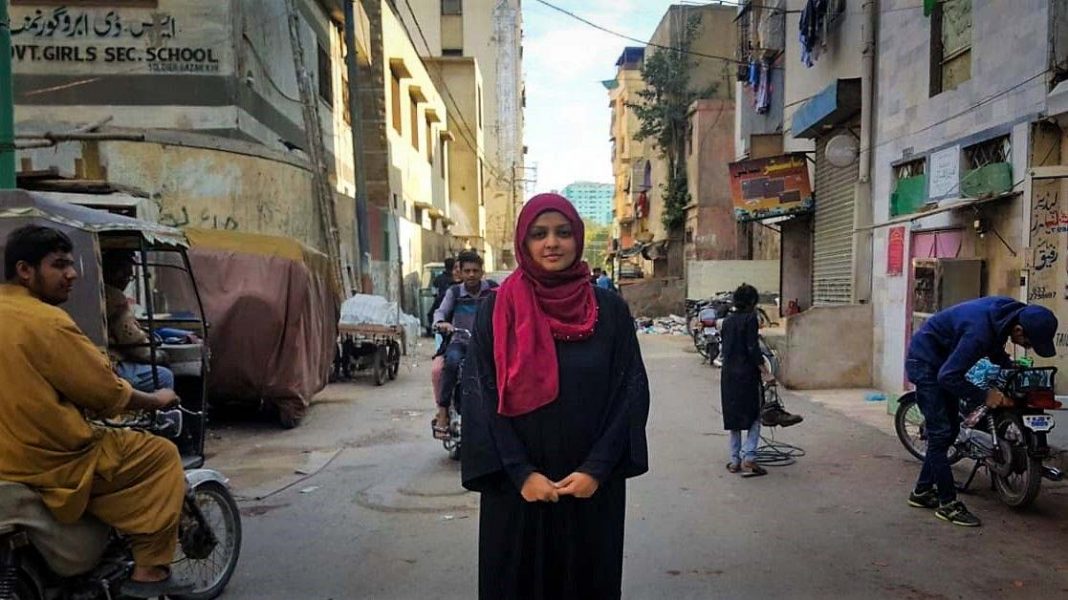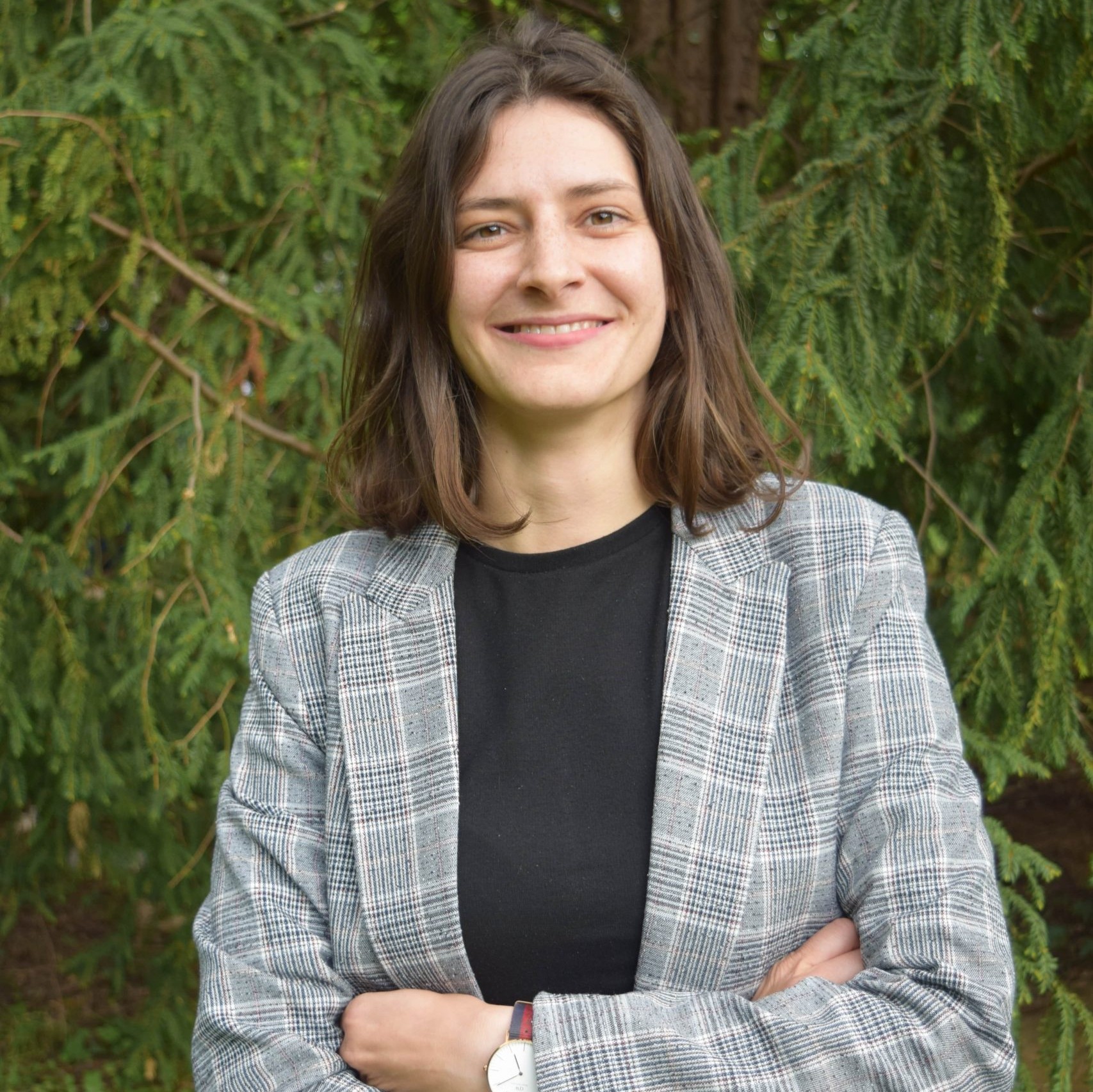Narjis Zehra is a go-getter, a visionary, a people person, and definitely a Young Leader to keep an eye on. Despite being only 23 years old, coming from a place where people are fighting over the very thing needed for survival, she knows the trialling journey of overcoming obstacles all too well, and the humbling feeling of gratitude when reaching small successes. She might currently live in Pennsylvania, but she still very much feels the connection with her hometown, Karachi, Pakistan.
The Start of It All

During her pursuit of an Electrical Engineering degree from the Habib University in Karachi, Narjis became exposed to a liberal environment, being encouraged to learn more than solely what was required for successful graduation: “People encourage you to study more about the problem than just for the solution; because all the technologists who want to build for the solution, at the end of the day only make what they want to make, and not essentially what’s needed to be made, or what actually adds value.”
It wasn’t until her final year project that she truly understood this while working on developing Karachi’s water map. The first step was to learn more about the circumstances of the water crisis in Pakistan, trying to understand how it became such a manmade problem: “was it even a problem at the very first place where there was a technological intervention needed or was it more of a paradigm, a mindset shift? Was it more of a systematic fault, which could not be fixed in the first place?” Narjis wondered. As the project and the team grew, so did the understanding of the reality of water shortage in their hometown. That’s essentially what sparked this Young Leader’s interest in urbanism.
“Don’t Get Shot”
Coming from a place facing immense water scarcity, it’s no wonder Narjis says that “water is the new oil”. And as we know too well from oil exploitation, people will go through extensive lengths just to obtain something that is so rare and has such a high value. Karachi is no exception.
The Karachi water mafia is taking advantage of this metropolis being the world’s third most water-stressed city. They run hundreds of illegal pumping stations generating millions of dollars every year. They puncture government pipes, creating ‘illegal hydrants’, stealing the water and selling it to Karachiites. For about $150 per month, they deliver clean water, and for around $20 per month, polluted water. The latter being the one that most residents can afford.
And that’s not even all – in 2013, activist Perween Rahman, working on water traces in Karachi, was killed because she got to know a little too much about the water system and the functioning of water mafias. Some feared the same fate for Narjis and her team. As soon as the word got out about the work that they were doing in creating a permanent water solution, they started to get a lot of attention, to the point where they were advised to “stay low key and don’t get shot.” Sadly, they had to put the brakes on the project, but according to Narjis, it was essential advice “because we as students were highly motivated: We wanted to change the world, wanted to change the water crisis in Pakistan, but when we’re working with dangerous stakeholders, we fail to realise what we’re dealing with.”
Their project was called the Shape of Water (but you won’t find it online, as it had to stay low-profile) and it aimed to use ground-penetrating radars to map water pipelines, as Karachi severely lacks information about their location. Right now, there are two main water sources for Karachi: Keenjhar Lake and Hub Dam. As Narjis explains, Karachi’s daily water demand is roughly 1,100 million gallons per day (MGD), the water coming from the sources is around 550 MGD. But due to the water mafia and leakage of pipes, the water that actually reaches the city is only about 340 MGD. “Upon going through a lot of research, we realised that the Karachi water crisis was a very layered civic issue. The water crisis comes from the fact that there is no water, but even the technical management and financial management also play a very big role in that entire crisis,” Narjis points out. In fact, the mafia routinely pays off officials from Karachi’s water board, the police, and the owners of the land. The pipe is then punctured, from which the trio massively benefit.
Eventually, Narjis’ team (Narjis Zehra, Areej Al Medinah, Mursalin Larik, Syed Ali Arshad) was able to map out a few pipelines, which “was a huge success”, but with the water mafia being the only ones to know the location of the pipelines, you can see why “people had warned about not going public about it”. So, even though they had grants and the equipment needed to continue the work, the Shape of Water had to be closed.

Always looking on the positive side of things, Narjis points out the fact that “we don’t always get the best circumstances to work with,” and hopes she and her former team will be able to touch base on it in a few years to see what can be done.
Lack of Information & Care
For Narjis, the lack of availability of data in Karachi presents a huge obstacle: “The world is going to move way ahead of us. And only after we’ve realised how we were lagging behind, will we understand how absolutely necessary data is for all future developments.” For example, look at what the lack of infrastructural knowledge about the pipelines brought upon this city.
“But then there is far more needed to be said, the conversations not happening that need to happen, not just about the availability of data. The fact that no one takes care of Karachi, and the sheer ignorance by political power,” Narjis adds, emphasizing the importance of the city for the whole country. The Karachi port is one of the largest ports in South Asia, dealing with 60% of the nation’s cargo. “If something happens to Karachi and we’re not able to run the port anymore, every single industry in Pakistan would face consequences. But at the end of the day, no one is taking care of Karachi,” Narjis declares, continuing by saying that “NGOs try, but it’s the government’s responsibility and the government is just not there. The politicians are so indifferent to the problems that their citizens face.”
“Cities are where everyone is moving to now. We need to make them liveable; we need to make Karachi liveable. We need to design it in such a way that it’s not an inconvenience to live there.”
As for the future, Narjis just wants to see Karachi progress, starting with implementing a functioning public transport system. “We are at this point where we’re so far behind. And if we don’t start moving forward, we will be crushed. We need to strive, we need to thrive, we need to stay alive.”
And the Way to Do It?
When asked about the skills needed in the field, there was no hesitation: empathy.
“When we say human-centred design – who is that human? What is that design we’re curating? What is the value we’re adding?”
Much of Narjis’ work revolves around humans and how technology can benefit them. “With the right technical skills, I can make whatever solutions I want, but then who am I making it for? If you don’t empathise with the people who you’re working for, you’re not working for them anymore,” she ponders, expressing the necessity for trying to understand the struggles and problems of our fellow human beings instead of just assuming what they’re going through.
Right now, Narjis is pursuing her degree in Product Management at Carnegie Mellon University in Pittsburgh, Pennsylvania, US. Her wish in life is to gap the bridge between empathy and technology, bringing civic problems closer to solutions, where the technology allows it. “Having lived in Karachi, having been one of the people that I would want to empathise with, I want to create a brighter urban future. The future lies there right now in terms of the tech, design and the people – I want to bring them together,” she says. A wish we can certainly see her fulfilling considering all the enthusiasm, passion and understanding of people she brings to the table.
Perseverance Is Key
Karachi’s state may seem like a lost cause at the moment, but by having people like Narjis, positive changes can be made. In fact, Narjis remembers one of her professors saying that “if you think you’re solving the problem right now, don’t stop doing it until you have solved the problem.” An advice that stuck to Narjis for years to come, and no doubt a motivational one for any future CityChanger embarking on a transformative journey.


